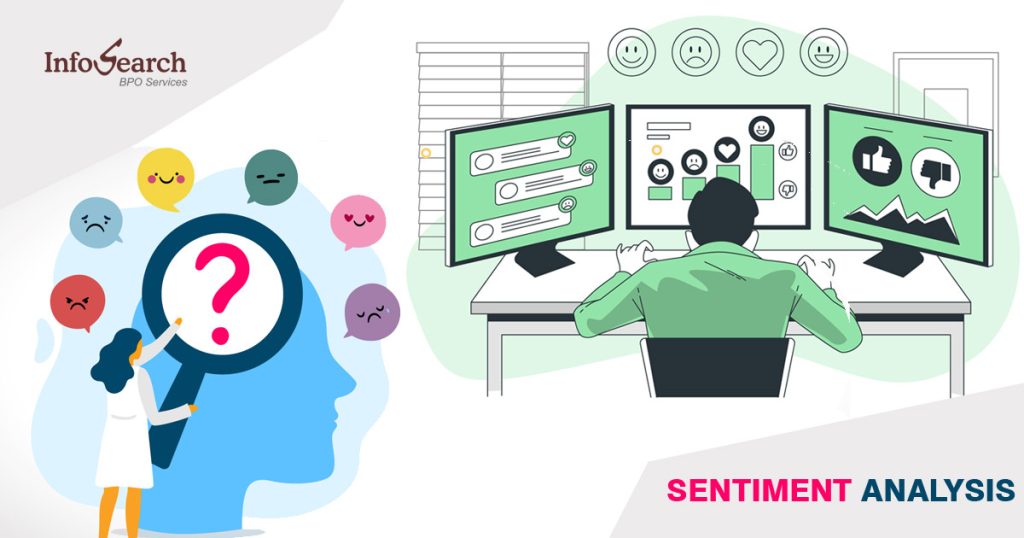
Once you start applying the insights to your brand and internal operations, business data can help you acquire a competitive advantage. Sentiment analysis can assist you in gaining these insights and determining what your customers want from your product. To use it appropriately, you must first comprehend sentiment analysis and how to employ sentiment analysis for the greater good.
In this post, let’s discuss sentiment analysis and why it is useful? Let’s begin!
What is Sentiment Analysis and how does it exactly work?
Sentiment analysis is the recording and tracking of consumer thoughts, emotions, and feelings expressed in various interactions, including social media posts, customer care calls, and surveys. The purpose of sentiment analysis is to determine the sentiments or attitudes expressed regarding a company, product, service, person, or event by analyzing and processing text, natural language, computational linguistics, or biometrics.
The majority of a person’s thoughts and feelings are subjective rather than objective. It makes determining an individual’s attitude or viewpoint from a piece of text extremely challenging. From the perspective of text analytics, the goal of sentiment analysis is to determine a writer’s attitude toward a topic in a piece of text and its polarity: positive, negative, or neutral.
Sentiment Analysis online and its application to business analytics have attracted increasing interest from brands, corporations, and researchers in recent years. Many data analytics streams and the business sector are looking for “business insight.”
TOP REASONS HOW SENTIMENT ANALYSIS IS USEFUL:
1) Helps improve your customer service:
It is challenging to establish strong client relationships because today’s customer service goes much beyond the usual telephone support worker. In the present online scenario issue, it’s critical to act quickly and avoid consumer turnover. After two or more poor experiences, 80% of customers will transfer to a competitor.
The quicker you react, the higher your chances of solving the situation are. Customers who are pleased with your product will spread the word about it. As a result, sentiment analysis helps identify the negative feedback and why customers are unhappy with your product or service. Sentiment research allows you to respond quickly to issues before the customer abandons you!
2) Helps improve your product and services:
Customer reviews address a variety of difficulties or defects, offer suggestions for enhancing the product, and clearly express customers’ desires. As a result, performing sentiment analysis on customer evaluations can help you identify what’s missing and, as a result, point you in the right direction for improvement.
One may identify, for example, consumers talking about how difficult it is to locate particular product categories using effective sentiment analysis models that match your core product and business and then prioritize working on filters before it’s too late.
3) Keep an eye on how people perceive your brand:
Building your brand and sustaining its reputation in a competitive business environment is a demanding undertaking. Techniques for sentiment analysis make it easier to track the industry through customers’ eyes. You can quickly determine what is bothering your customers and why they are unhappy with your product or service. The top-level thread of unfavorable comments provides you with plenty of opportunities to respond and listen to your customers.
Finally!
Sentiment Analysis models are only helpful if you know how to use it to its best potential. You must understand where it can be used and how it can assist you. It can help you detect negative feelings against your brand, reach clients sooner, and avoid a public relations disaster.
It can, however, assist you in identifying satisfied consumers who are more likely to become brand promoters or ambassadors. You must know what you’re looking for and how to go about finding it! We hope that this article, regardless of your industry, will have assisted you in implementing a customer-centric approach.
Infosearch offers a list of data annotation services including image annotation, bounding box, semantic segmentation, sentiment analysis types and more.
Contact us if you are looking to outsource your annotation support services.
Popular Tags
sentiment analysis using machine learning, sentiment analysis project, sentiment analysis on social media, sentiment analysis social media, sentiment analysis tools,
sentiment analysis meaning







Recent Comments